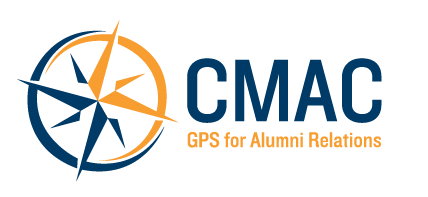Going from Good to Great in Alumni Engagement
Over the last three years, I’ve examined the inner workings of dozens of advancement shops, assessing and learning the philosophies and workflow challenges that propel excellence in alumni engagement and those dynamics that can prevent progress. Although we’re routinely hired when a team is going through a total rebuilding phase, advancement vice presidents, more often than not, look to us for help going from good to great.
When afforded the chance to look under the hood, our first step is to conduct a discovery process. It’s fair to say that these examinations have yielded consistent themes when a vice president of advancement senses that their alumni engagement program is missing components and, therefore, isn’t assisting in their efforts to raise philanthropic dollars.
I’ve heard the phrase from an advancement VP more than once: “We just haven’t cracked the nut on our alumni engagement program.”
It’s become clear to me that several friction points are often present within an advancement unit that seem to be preventing the growth and success of their engagement endeavors. Here’s how staff members usually describe five of the most common pain points when conducting interviews.
“We work in the same building, but we’re not working together.”
One of the most common refrains I hear is that advancement teams are operating in silos. What this has come to mean for me in terms of really analyzing the implications of these silos is that when staff members talk about this lack of cohesiveness, what they really mean is there’s an absence of shared goals around donor engagement.
An advancement unit’s purpose is to raise philanthropic funds, and all the teams within the unit need to work toward that shared purpose.
“We do all-comer events, and they do donor events.”
I believe the we/they paradigm is holding back teams from aligning resources and creating shared goals regarding events. All events are advancement events. No matter who gets invited to the event, the purpose of the event must be understood from the top down, and it should always have goals that further the work of cultivating philanthropic involvement.
An event doesn’t have to explicitly include fundraising messages or be geared toward cultivating current donors. Still, if it doesn’t, the event better have a purpose for moving attendees into meaningful volunteer experiences. Volunteers give at 3x (or more) the rate, so creating more of them is a great goal for an advancement event.
“Our gift officers want to place donors into engagement experiences, but we have none.”
Perhaps advancement’s most significant challenge is relying on events to engage donors. Gift officers begin pushing their engagement counterparts to have more events because there has to be something next in cultivating their prospects that isn’t another ask for money.
The problem is that there are few volunteer opportunities at most colleges and universities. The existing ones are often different types of boards or councils with few spots available. Most of these boards exist almost exclusively to create more events! I firmly believe that more events aren’t the answer. Extraordinary events with unique programs, yes, but they’re time and resource-intensive. Since COVID-19, there’s been a fundamental change in the desire of our graduates and donors to attend. Simply put, an advancement team can move from good to great by working diligently to create new volunteer experiences and help make the existing ones more meaningful, thus scaling opportunities and helping gift officers place their prospects. Events should be used more strategically as accent pieces, and quality over quantity should win the day.
“We’re being asked to do more, but no one is willing to cut anything or give us more resources.”
At some point, it’s essential to acknowledge the fundamental reality. If there are no new staff members in the cards, and the vast majority of resources are dedicated to Homecoming, Alumni Reunions Weekend, and regional clubs or chapters, and there’s no political will to make cuts, an alumni engagement program will stay in “good” territory.
The choice is simple: dedicate new resources to engagement, make cuts, reorganize, and try new initiatives. Unfortunately, the politics involved are often tricky when making significant changes. Advancement VPs are trying to reach goals for lofty campaigns, and they can’t cut a consistently underperforming Homecoming because it would enrage a few key donors. This is repeating a vicious circle.
Advancement teams looking to strengthen results must be bold, and the leadership team has to be willing to take calculated risks and be willing to fail.
“We don’t have the resources to measure activity and create an engagement scoring model.”
The reality is that to show college deans the quality and caliber of the engagement work that’s already happening or to provide gift officers with the insights they need to be successful; there’s no substitute for allocating the resources necessary for advanced data science and reporting capabilities dedicated to engagement.
If there’s not enough money for an FTE in this area, funds must be set aside for outsourcing and hiring a freelance specialist. To go from good to great, advancement must be able to show their work and provide evidence that engagement leads to philanthropy.
I’d love your thoughts! What are the other pain points facing engagement teams?
RYAN CATHERWOOD
SENIOR CONSULTANT
Ryan Catherwood is a Senior Consultant with Washburn & McGoldrick, LLC, and Senior Vice President with Chris Marshall Advancement Consulting (CMAC). Ryan co-hosts Alumless, a regular web series and podcast that is published every other Friday on Linkedin and YouTube.








